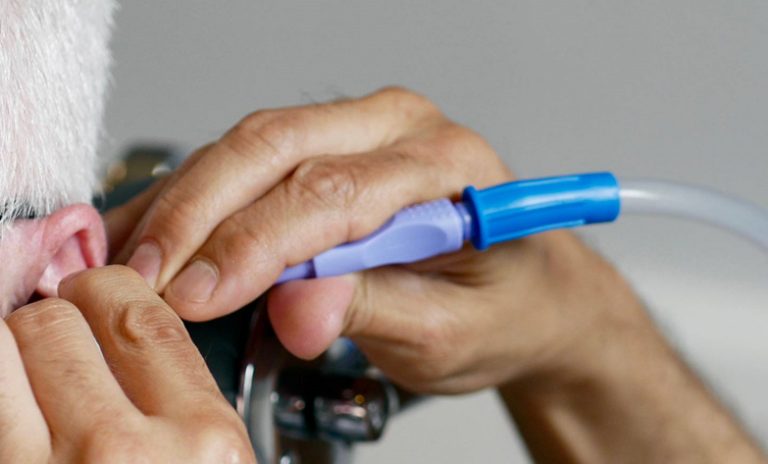Microsuction is a method of ear wax removal. Ear wax is removed using a gentle suction and a high power microscope to view the ear canal and drum. It is the preferred method used by Ear Nose and is Our hearing health professionals have extra training to perform microsuction ear wax service nationwide. Impacted ear wax, leading to blocked ears and hearing loss as well as
fullness and discomfort, is common. It is estimated that just under a third of people over the age of 60 experience this problem.
Our advanced microsuction service allows our specialist to remove ear wax, very quickly and safely in the comfort of your own home or in one of our hearing care centres near you.

The Benefits of Our Microsuction Ear Cleaning
Using our services ensures that you have your earwax removed safely, quickly and by a person you can trust. The process is usually over in a few minutes and the majority of people find it
easy and comfortable. The process is the safest way to remove earwax as the professional can see everything they are doing during the removal. Unlike ear syringing or ear irrigation, where ear wax is flushed out without a view of the ear canal, during microsuction; the canal and the ear wax is being directly viewed with the microscope whilst it is being removed. This makes the procedure much quicker, safer and most importantly comfortable for the patient. Other benefits of this microsuction ear wax removal include:
A Good View of The Ear Canal
The hearing healthcare professional has an excellent view of the earwax and the ear canal and they can see exactly how much wax needs to be removed. This makes it safe and more efficient
process for the patient.
No Ear Drops Needed
With microsuction, there may not be the need to apply ear drops for wax beforehand, which is the case with ear syringing or ear irrigation. However, using ear drops can still help in the
removal if advised by one of our hearing health care experts.
No Messy Water Used
No water is being flushed into the ear canal as happens with ear syringing or ear irrigation. Instead the procedure is performed dry significantly reducing the risk of infections in the ear.
Safe For Perforations
